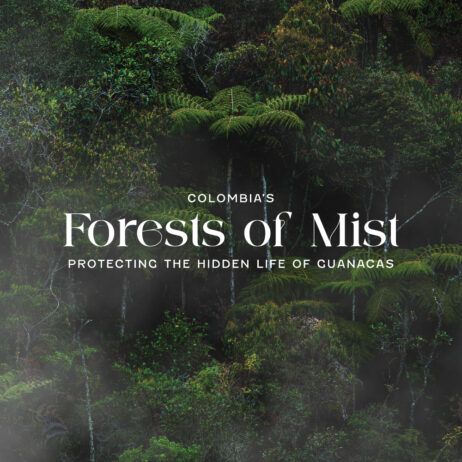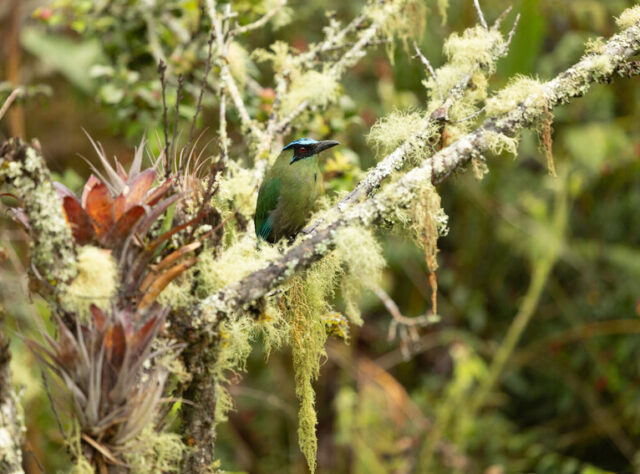
Trees are a habitat for lichens which, in turn, host the insects that birds feed on - such as this Andean Motmot. Credit: Andrea Ferreira.
Cloud forests are a relatively rare ecosystem. In 2022, it was found that of all woodland types in the world only 1% of them were cloud forests – a decline from 11% in the 1970s. They are home to endless relationships between water and wildlife. Rising to 2,700 metres, these forests have year-round cloud cover or mist that keep it regularly cloaked in moisture. Central to this damp ecosystem in Guanacas are a community of plants which enable the cloud forest’s existence.
A forest that is fluid
Mosses are an icon of this cloud forest. Carpeting the forest floor and coating tree branches, they can hold up to nearly twice their weight in water which they release slowly, drip feeding it into their surroundings. Similarly, the locally endemic Paramo Frailejón (Espeletia occidentalis), which is Near Threatened, has tiny hairs on its leaves which trap fog as it ripples through the forest air. Turned into liquid upon contact, the water is then channelled towards the plant’s stems and returned to the soil through its roots. The activities of these plants explain why Guanacas Reserve is referred to as a “reservoir” of water for the Antioquia region. Plants are essential for capturing and regulating water supplies for human communities and wildlife in this area of the Tropical Andes.
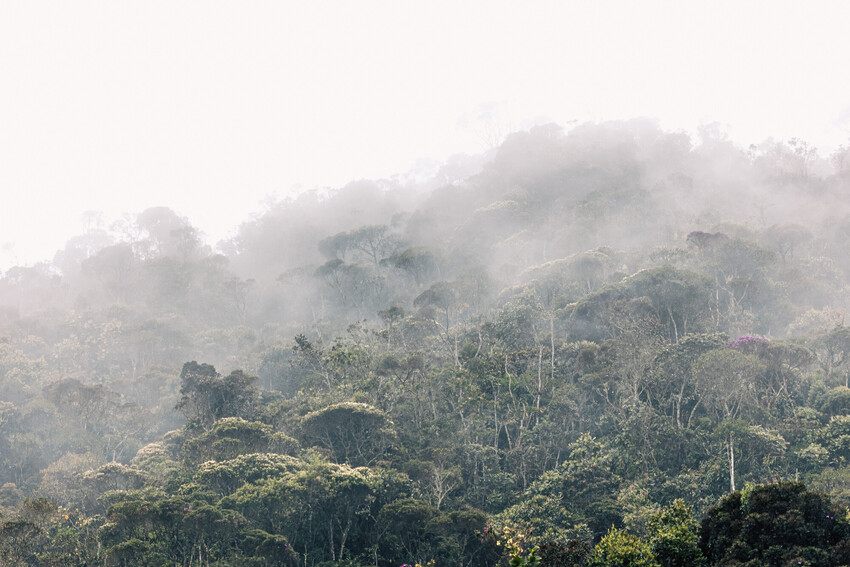
A fog hands above the forest canopy at Guanacas Reserve. Credit: Andrea Ferreira.
Walking through a living landscape
Walking through the forest is said to be like “walking through the history of life itself; the history of biology”. This is in large part because of the diversity of botanical life here. Over 250 different plant species have been recorded and over a short five-day research trip, scientists encountered over 120 kinds of orchid species. Some of these are so small you would need a magnifying glass to see them properly. Meanwhile, the giants of the forest which stand tall amongst the treescape are the Quindio Wax Palms. Growing up to 60 metres tall, this Endangered Palm is the national tree and emblem of Colombia. Fundación Guanacas are focusing on conserving this species, whose future is the concern of many species. The Vulnerable Yellow-eared Parrot, for example, nests and roosts in its canopy and feeds on its fruits.
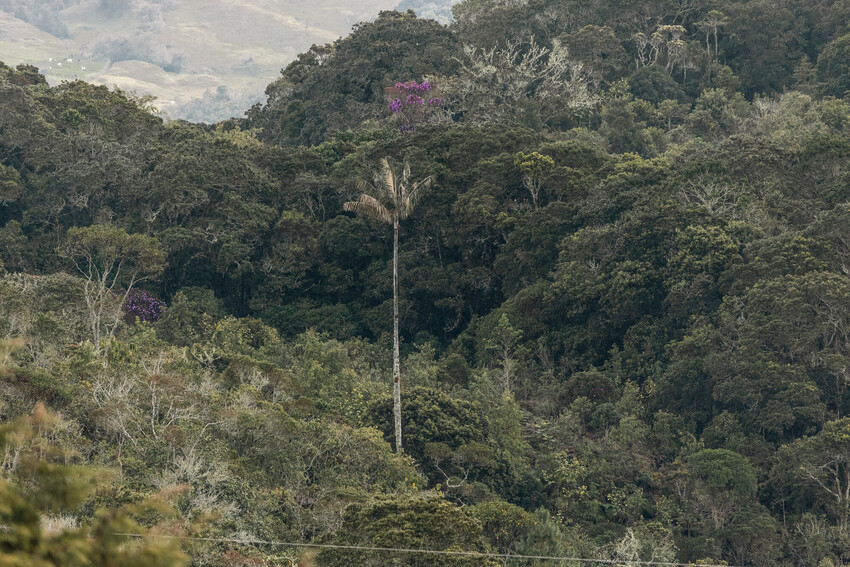
The Quindio Wax Palm is Colombia’s national emblem, is a Vulnerable species, and a key supports other species in this ecosystem. Credit: Andrea Ferreira.
Paying attention to plants
Beyond individual species, paying attention to the incredible plant life in Guanacas reveals a web of connectivity. These relationships may often seem hidden, “But each individual stick found on the forest floor will be host to lichens, insects, and many other species. You just need to pay attention” notes Maria Alejandra Moreno Vásquez, Project Coordinator at Fundación Guanacas.
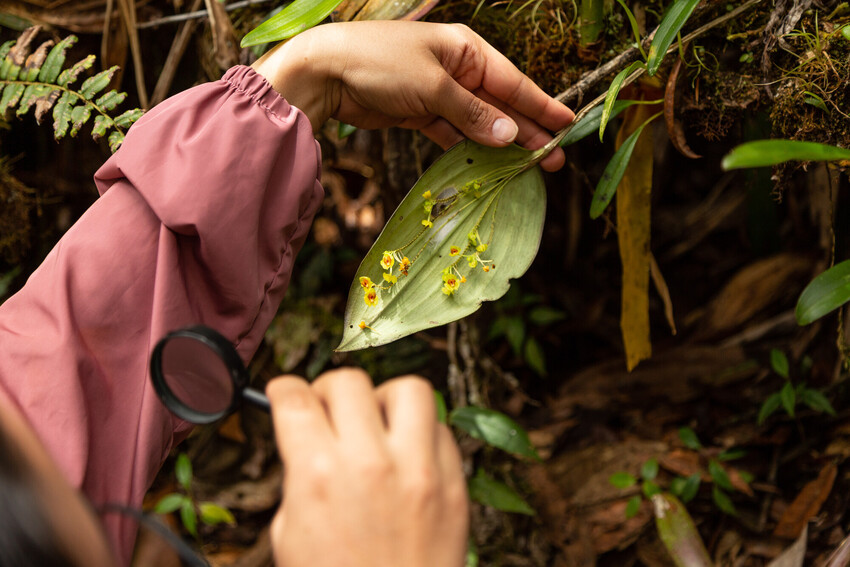
There are over 120 orchid species in Guanacas Reserve. Credit: Andrea Ferreira.
Guanacas teaches us the fundamental importance of recognising and valuing the role of plants in nature. Walking through the forest here, one will pass a vast array of epiphytes which cling and dangle from the tree trunks and branches. These include plants like orchids, bromeliads, and ferns.
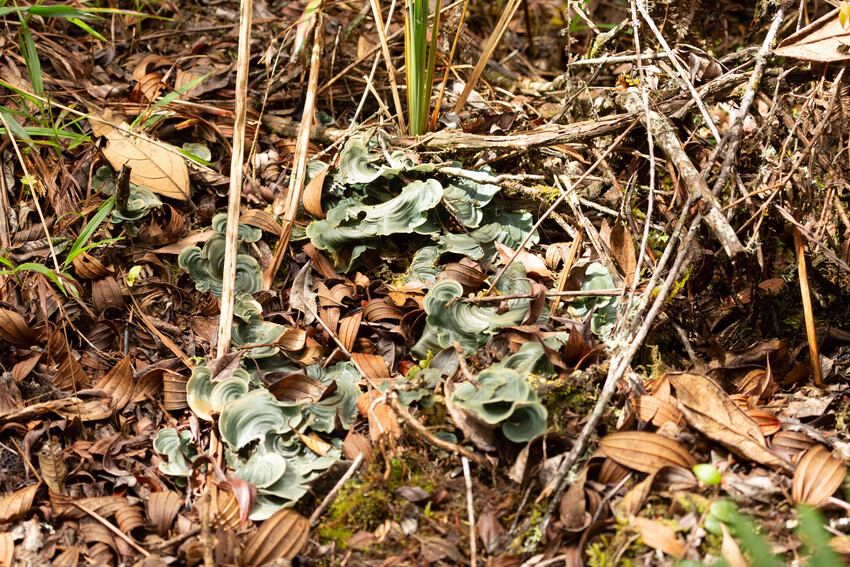
Dictyonema glabratum is a neotropical Cyanolichen; a symbiosis between a basidiomycetes fungus and a cyanobacteria. Curious lifeforms like this one abound in Guanacas. Credit: Andrea Ferreira.
Among others, two tree species host these plants: the Andean Oak (Quercus humboldtii) and Magnolia yarumalensis which grows wild only in Colombia. Epiphytes don’t have roots that absorb water and nutrients like other plants do, but instead grow on another plant’s surface. They are integral to the moisture accumulation that defines the cloud forest and can act as small ecosystems in and of themselves. Bromeliads, for example, collect water in their bucket-like centres. Tree frogs lay their eggs in these micro-ponds, and tadpoles then develop into frogs which live high in the trees. Frog species that depend on bromeliads include the Paisa Frog (Hyloscirtus Antioquia) and Antioquia Chocolate Frog (Hyloscirtus Antioquia), both Vulnerable and endemic species in the Guanacas Reserve.
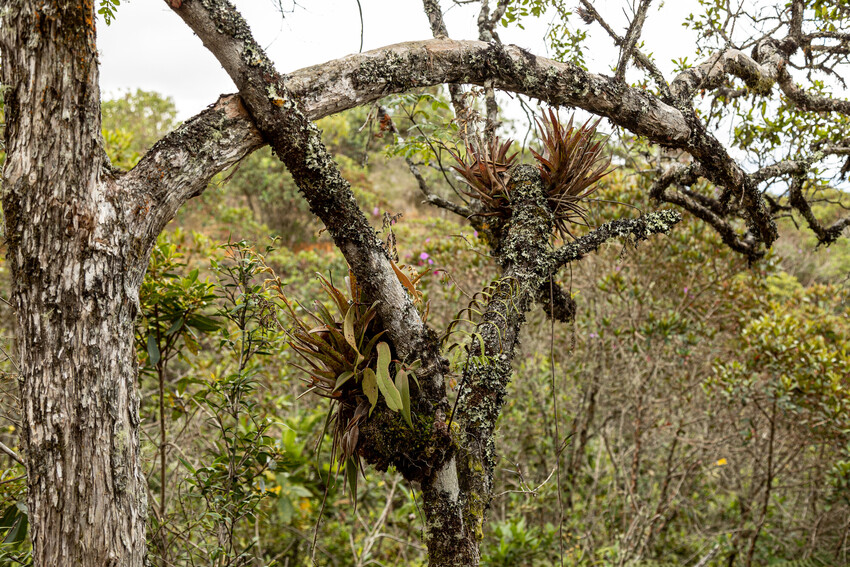
Trees are vital hosts for Bromeliads. These plants don’t need to be in soil to survive. Instead, they anchor themselves on tree branches where their roots draw moisture and nutrients from their surroundings. Credit: Andrea Ferreira.
Moisture makes the miniature
One cannot explore Guanacas without noticing the lichens. Though plant-like, lichens are not actually plants, nor are they a single organism. They are the result of a relationship between a fungus and an algae and/or cyanobacteria. Lichens are unsung heroes of cloud forests and they join mosses in offering micro-habitats for spiders and insects. There are over 20,000 lichen species across the world and are masters of survival, capable of finding a home even on bare rock. In Guanacas, a lichen species that looks remarkably like coral is important in the diet and nest-making habits of many of the 443 bird species living in the project area. Lichens and mosses also have a role in forest restoration, by trapping seeds from plants which helps with germination.
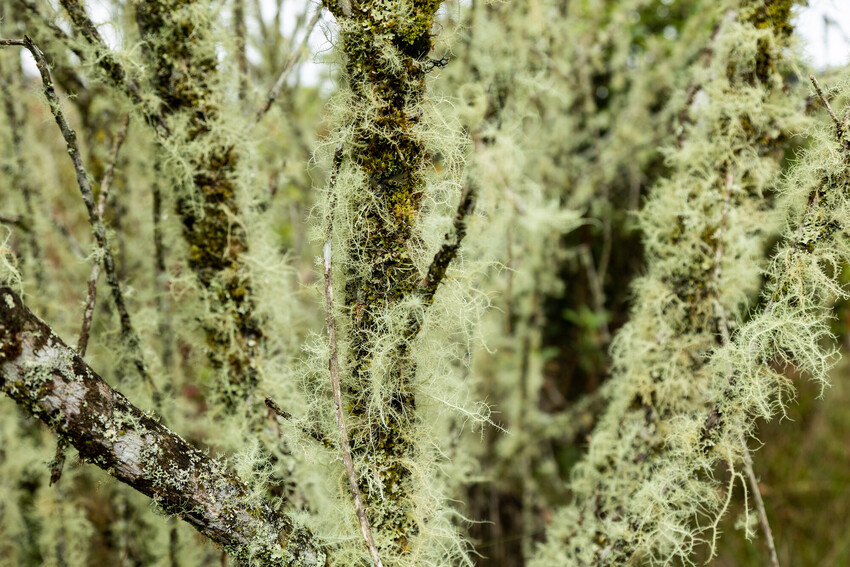
Lichens are an indicator of a humid environment, are hosts to multiple insect species, and are used by birds in nest-making. Credit: Andrea Ferreira.
Increasing global temperatures due to the climate crisis puts cloud forests at real threat, as does deforestation from logging, agriculture, and cattle grazing. WLT’s Colombia’s Forests of Mist appeal is helping Fundación Guanacas in its incredible work to protect, restore, and care for these precious fountains of life.
Donate today and stand together with Fundación Guanacas to defend the hidden botanical world of this remarkable cloud forest.
